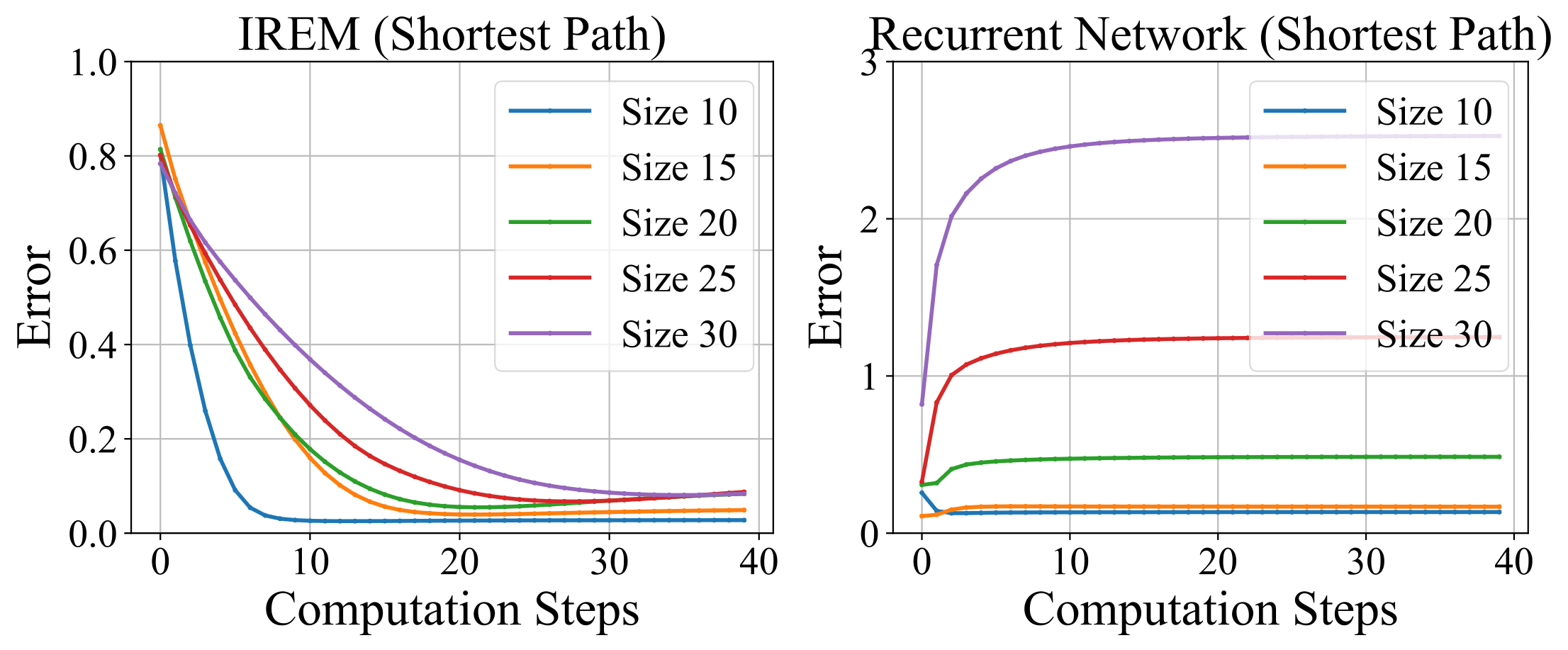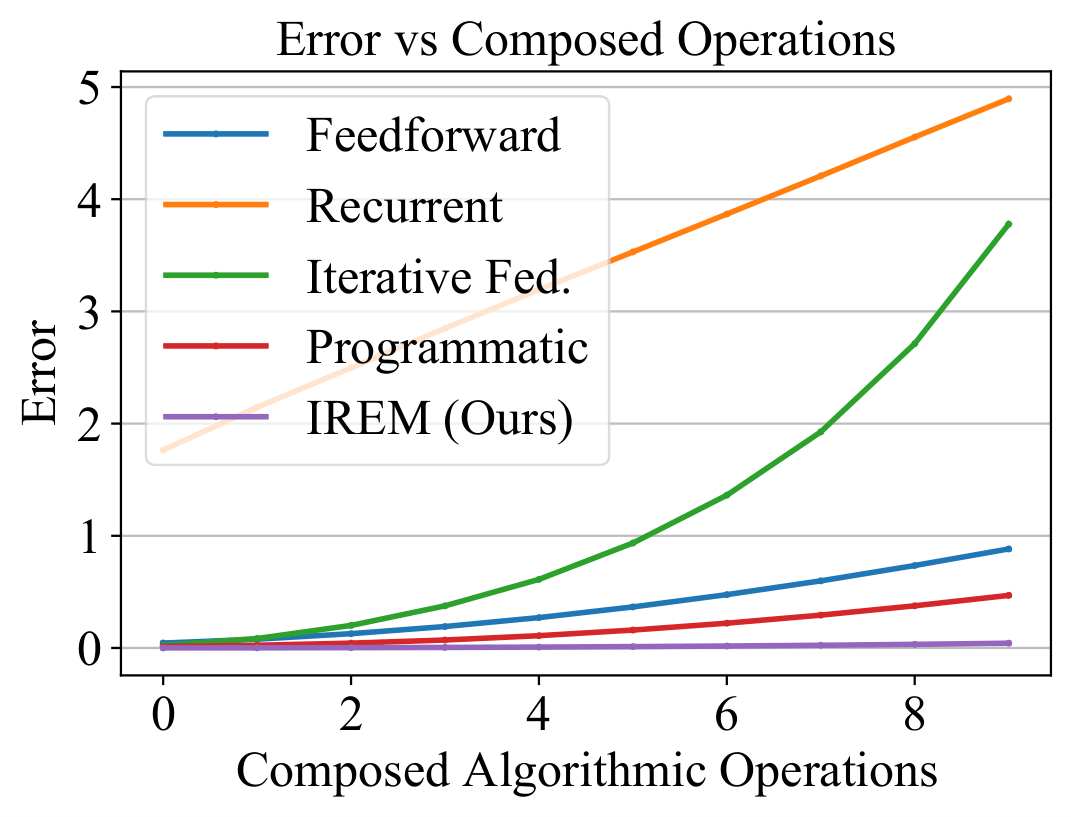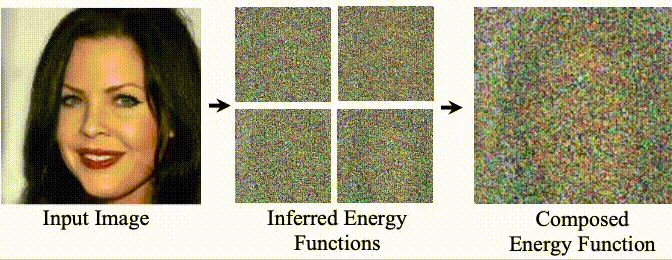Reasoning as Energy Minimization: We formulate reasoning as an optimization process on a learned energy landscape. Above, we illustrate intermediate optimized solutions as we compute the shortest path in a densely connected graph, compute the summation of two 20x20 input matrices, and denoise a noisy input image.
Deep learning has excelled on complex pattern recognition tasks such as image classification and object recognition. However, it struggles with tasks requiring nontrivial reasoning, such as algorithmic computation. Humans are able to solve such tasks through iterative reasoning -- spending more time to think about harder tasks. Most existing neural networks, however, exhibit a fixed computational budget controlled by the neural network architecture, preventing additional computational processing on harder tasks. In this work, we present a new framework for iterative reasoning with neural networks. We train a neural network to parameterize an energy landscape over all outputs, and implement each step of the iterative reasoning as an energy minimization step to find a minimal energy solution. By formulating reasoning as an energy minimization problem, for harder problems that lead to more complex energy landscapes, we may then adjust our underlying computational budget by running a more complex optimization procedure. We empirically illustrate that our iterative reasoning approach can solve more accurate and generalizable algorithmic reasoning tasks in both graph and continuous domains. Finally, we illustrate that our approach can recursively solve algorithmic problems requiring nested reasoning.
Reasoning through Energy Minimization
Existing approaches torwards iterative reasoning typically rely on the iterative application of a neural network module. In this work, we propose an alternative iterative reasoning approach, Iterative Reasoning as Energy Minimization (IREM), where iterative reasoning is implemented as a iterative optimization process on a learned neural energy landscape parameterized using an EBM. Below, we illustrate this conversion, where the algorithmic operation of addition is converted to an optimization process on a learned energy landscape. The solution of the algorithmic task corresponds to the minimum of the energy landscape. By formulating iterative reasoning in this manner, we obtain a natural termination criteria for reasoning (corresponding to a minimum the energy function). Furthermore, we illustrate how this enables us to adaptively reasoning dependent on the inherent difficulty of the task, and generalize to more complex variants of the task.
Graphical Reasoning
First, we illustrate how IREM enables iterative reasoning on graphs. We consider graphical tasks such as shortest path and connected components computation. On the bottom left, we illustrate the computation of shortest path using IREM. As sequential optimization steps are run, IREM is able to gradually recover the ground truth shortest path between start node (pictured in green) to a goal node (pictured in blue). On the bottom right, we find that IREM is able to generalize discrete algorithmic computations to significantly larger graphs at test time (performance on up size 30 graphs is shown), when only trained on up to size 10 graphs. IREM exhibits superior performance by utilizing more underlying algorithmic computation steps for more complex problems. In constrast, a recurrent approach is unable to extend algorithmic computation to large graphs, with increased iterative computation failing to improve final performance.

Matrix Reasoning
Next, we further illustrate how IREM enables us to solve algorithmic reasoning tasks on matrix inputs. In the figure below, we illustrate the optimization process on the task of matrix addition, where we seek to add all elements in a 20x20 matrix together. We plot the predicted matrix sum over the course of optimization, as well as the associated error map. Over sequential reasoning steps, we find that IREM is able to compute addition across elements in the matrix nearly perfectly. We find that IREM significantly outperforms baselines across tasks such as matrix addition, matrix inverse, and low-rank matrix completion. We further find that IREM is able to generalize better to harder problem instances than baselines.
Matrix Addition: Illustration of predicted solutions from IREM when adding Matrix A and B, both of size 20x20. As optimization is run, predictions (third column) converge to the correct answer, and the error map (fourth column), consisting of the L1 error of the predicted answer and ground truth answer, decreases to 0.
Recursive Reasoning

Qualitative Composition: Illustration of predicted solutions from IREM when recursively adding four 20x20 matrices. First 9 entries of the predicted 20x20 matrix are shown. Predictions are close to ground truth answer.

Related Projects
Check out our related projects on energy based models! A full list can be found here.


